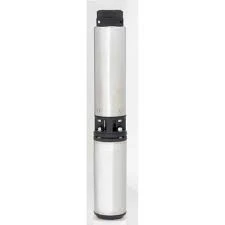Ноя . 21, 2024 18:34 Back to list
how does a deep well submersible pump work
How Does a Deep Well Submersible Pump Work?
Deep well submersible pumps are crucial devices used primarily for extracting water from deep underground sources. These pumps have transformed the way we access groundwater, providing a reliable solution for irrigation, drinking water supply, and industrial applications. This article explores the components, working principles, and applications of deep well submersible pumps, shedding light on how they operate to deliver water efficiently from deep wells.
Components of a Deep Well Submersible Pump
A typical deep well submersible pump consists of several primary components
1. Motor The pump features a specially designed electric motor located at the bottom of the well, which operates underwater. This motor is hermetically sealed to prevent any water ingress, ensuring reliable performance over time.
2. Pump Assembly Attached directly to the motor, the pump assembly consists of impellers and diffusers. The impellers are responsible for creating a pressure differential that moves water, while the diffusers help convert kinetic energy into pressure.
3. Column Pipe This vertical pipe connects the pump assembly to the surface, allowing water to flow upward through it.
4. Discharge Head Located at the surface of the well, the discharge head supports the weight of the pump and the column pipe, and serves as the connection point for the water delivery system. It integrates features for electrical connections and connections to surface piping.
5. Sealing Systems These prevent water from entering the motor and other electrical components, ensuring longevity and reliable operation.
Working Principles
The operation of a deep well submersible pump is based on principles of fluid dynamics and mechanical engineering. When the pump is activated, the electric motor spins the impellers at high speed. These impellers create a centrifugal force that pushes water outward and upward through the pumps. The design of the impellers and diffusers is crucial, as it determines the pump's efficiency and flow rate.
As the water moves through the pump assembly, it experiences a reduction in pressure, allowing groundwater from the aquifer to flow into the pump. This process relies heavily on the depth of the well; deeper wells require more powerful motors and more stages of impellers to lift water to the surface.
how does a deep well submersible pump work

The column pipe carries the water above ground where it can be stored or utilized
. The pump can be automated with pressure sensors or float switches, allowing for efficient operation based on the demand for water.Applications
Deep well submersible pumps are used in various scenarios
1. Agriculture Farmers utilize these pumps to irrigate crops, particularly in areas where surface water is scarce. They enable the extraction of water from deep aquifers, ensuring a consistent water supply for irrigation.
2. Domestic Use Many households in rural or remote areas rely on submersible pumps to access clean drinking water from deep wells. These systems effectively provide water for households and livestock.
3. Industrial Applications Industries often require significant amounts of water for processes. Deep well submersible pumps efficiently supply water for manufacturing, cooling, and other applications.
4. Municipal Water Supply In some regions, municipal water systems use deep well submersible pumps to extract and distribute groundwater, ensuring communities have adequate water supplies.
Advantages
The advantages of deep well submersible pumps include
- Efficiency They offer high efficiency in converting electrical energy to hydraulic energy, providing substantial flow rates. - Durability Built to withstand harsh underwater conditions, these pumps typically offer long service life with minimal maintenance. - Space Saving With the entire unit submerged in water, they save space at the wellhead compared to surface pumps.
Conclusion
Deep well submersible pumps play an indispensable role in modern water supply systems, efficiently extracting water from deep underground sources for various applications. Their design, functioning, and versatility make them essential tools for agriculture, domestic use, industry, and municipal water systems. Understanding how these pumps work not only highlights their importance but also underscores the technology that allows us to sustainably manage our water resources.
-
Submersible Well Pumps Buying Guide
NewsMay.14,2025
-
Submersible Sump, Dirty Water, Borehole Pumps Demystified
NewsMay.14,2025
-
Stainless Steel Submersible Pumps Superior Performance
NewsMay.14,2025
-
High Flow Submersible Well Pumps Essential Features
NewsMay.14,2025
-
Choosing the Best Stainless Well Pump
NewsMay.14,2025
-
A Comparison of Submersible Pumps Filled with Water and Oil
NewsMay.14,2025
-
 Submersible Well Pumps Buying GuideReliable access to clean water is fundamental for residential, agricultural, and commercial operations, making the selection of an appropriate well pump system one of the most important infrastructure decisions.Detail
Submersible Well Pumps Buying GuideReliable access to clean water is fundamental for residential, agricultural, and commercial operations, making the selection of an appropriate well pump system one of the most important infrastructure decisions.Detail -
 Submersible Sump, Dirty Water, Borehole Pumps DemystifiedThe world of water management has undergone a technological revolution, with advanced pumping systems now offering unprecedented efficiency and reliability across diverse applications.Detail
Submersible Sump, Dirty Water, Borehole Pumps DemystifiedThe world of water management has undergone a technological revolution, with advanced pumping systems now offering unprecedented efficiency and reliability across diverse applications.Detail -
 Stainless Steel Submersible Pumps Superior PerformanceModern water extraction and fluid handling systems demand equipment capable of withstanding harsh environments while maintaining peak efficiency.Detail
Stainless Steel Submersible Pumps Superior PerformanceModern water extraction and fluid handling systems demand equipment capable of withstanding harsh environments while maintaining peak efficiency.Detail
